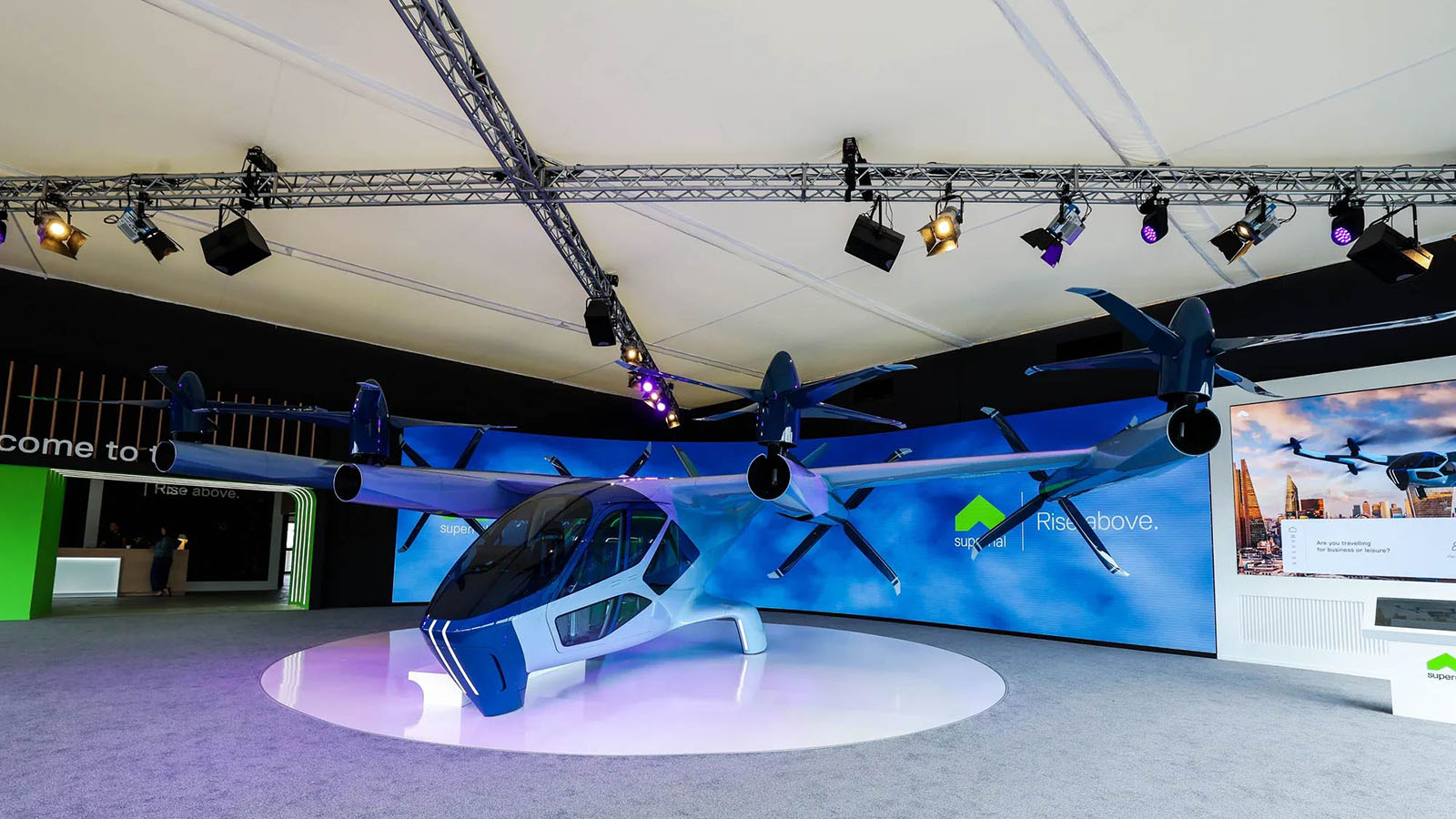Stay Up to Date
Submit your email address to receive the latest industry and Aerospace America news.
Not everyone wants to be first into business
Among the electric air taxi makers that are working entirely or largely without financial support from large corporations, funds are tightening.
Joby Aviation, the California company that plans to begin carrying passengers as early as next year on its five-seat S4 aircraft, once had a war chest of $2.2 billion that included $400 million from Toyota plus funds raised by selling stock on the New York Stock Exchange. Joby’s most recent financial statement to shareholders and to the Securities Exchange Commission, released today, disclosed that its cash on hand is down to $825 million. In a February shareholder letter, the company said it anticipates spending between $440 million and $470 million this calendar year.
The dwindling funds — not just for Joby, but for others as well — raises the question of whether it would be better to be owned by a large corporation. As is the case with most matters in this nascent industry, opinions differ.
A handful of companies make up this second category of independently operating electric air taxi developers that have large corporate owners. There is eAviation, owned by Textron, which is developing the Nexus in Wichita. There is also Honda, which is developing an as-yet unnamed aircraft in Japan. And there is Supernal, an affiliate owned by Hyundai Motor Group in South Korea, owner of the Genesis, Hyundai and Kia car brands. There is also Wisk, a Boeing subsidiary based in Silicon Valley that aims to begin flying passengers in remotely monitored air taxis by 2028.
I met with a Supernal executive at the Farnborough International Airshow last month and came away understanding that the company likes having the world’s third largest automaker as its benefactor. “We have the real funding, from Hyundai, which is a multibillion-dollar company and can make almost a million cars a year,” said David McBride, a former director of NASA’s Armstrong Flight Research Center in California who is now Supernal’s chief technology officer.
The funding from Hyundai has allowed Supernal to “keep our heads down as a company, keep a low profile so we don’t have to be out there raising funds every day, frankly. We’ve been designing the right plane for the right time, and we are going to be flying our full-scale technology demonstrator later this year,” he said, referring to the company’s planned tilt-propeller S-A2, designed for four passengers and a pilot. Farnborough was the first air show where the company publicly displayed a full-scale mockup of the craft.
McBride also said he is not worried that other companies might begin carrying passengers first. Joby is among several developers that plan to start selling or operating their aircraft next year, while Supernal anticipates beginning passenger flights in 2028.

Get the latest news about advanced air mobility delivered to your inbox every two weeks.
“Personally, I believe that being a fast follower is the efficient way to do this, just like the most successful cellphone companies of today were not the first to market,” he explained.
Two consultants who follow the market offered some cautions about any implication of endless patience.
“Even if owned by a larger aerospace or automotive player, those players might decide at some point to reduce or cut the funding, for example when progress is not happening at the expected speed,” said Robin Riedel, a San Francisco-based partner of the consulting firm McKinsey and Co., and co-leader for the firm’s Center for Future Mobility. “There are plenty of examples where large strategic players shut down or shrink internal projects.”
Examples include Boeing’s Sonic Cruiser jetliner, canceled in 2002, and Textron’s Cessna Citation Hemisphere business jet that was canceled in 2018.
Sergio Cecutta, co-founder of the Arizona-based SMG Consulting firm that maintains the AAM Reality Index, pointed to the ever-rising cost estimate of achieving certification from FAA or other aviation authorities.
“Corporate ownership is an advantage, especially since we are seeing these air taxi programs shifting from around $1 billion toward $2 billion to reach certification, but I don’t think it’s automatic that they will get further funding,” he said. “There’s a limit to a corporation’s patience for development like this.”
The AAM Reality Index currently ranks Supernal 14 out of 28 air taxi companies.
About paul brinkmann
Paul covers advanced air mobility, space launches and more for our website and the quarterly magazine. Paul joined us in 2022 and is based near Kennedy Space Center in Florida. He previously covered aerospace for United Press International and the Orlando Sentinel.
Related Posts
Stay Up to Date
Submit your email address to receive the latest industry and Aerospace America news.




